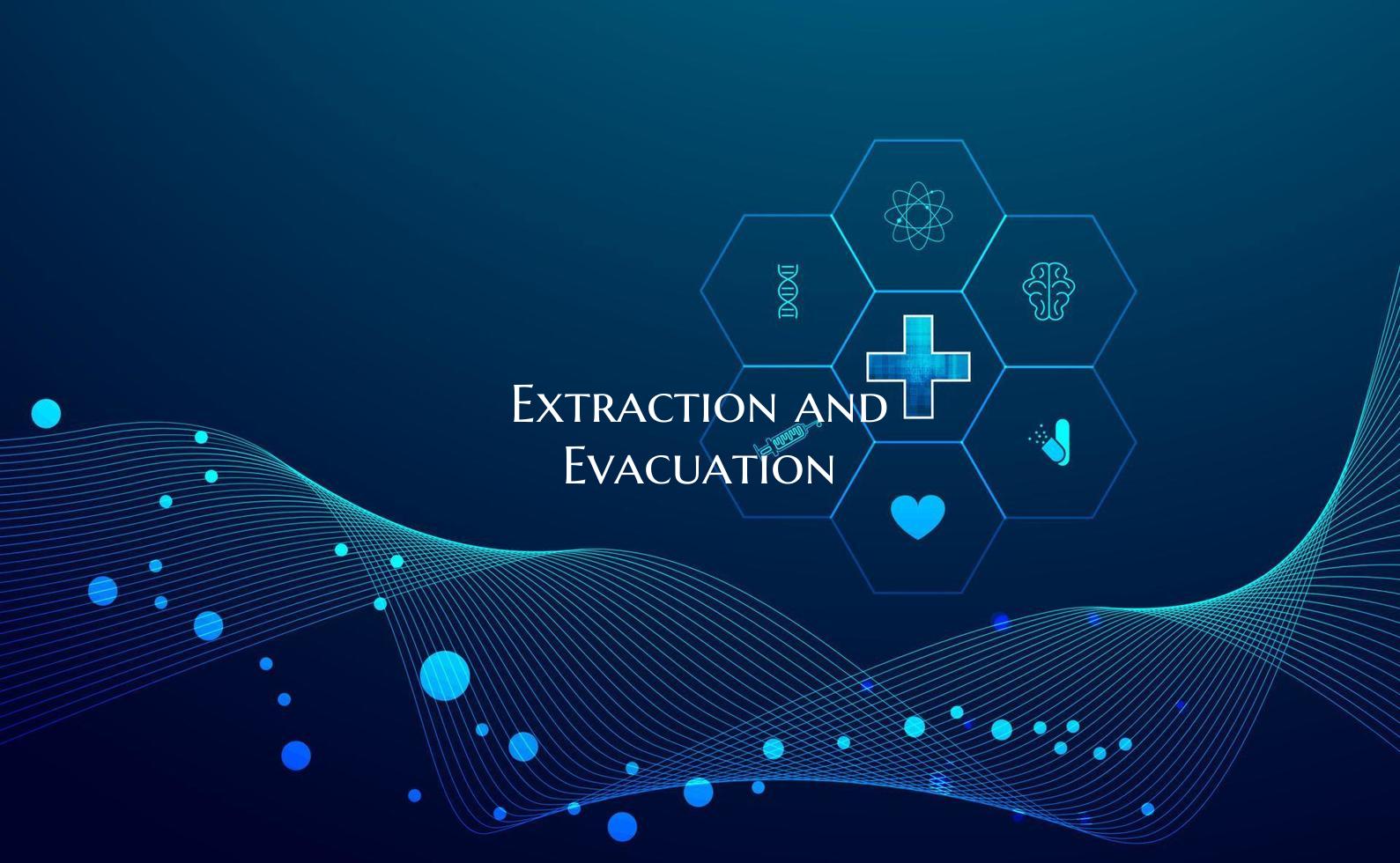
Extraction and Evacuation
Introduction: Extraction and evacuation procedures are critical components of emergency response protocols designed to ensure the safety and well-being of individuals in various situations. These procedures involve the timely and systematic removal of individuals from hazardous environments to secure locations for treatment and further assistance. Whether in natural disasters, industrial accidents, or medical emergencies, extraction and evacuation play a vital role in saving lives and minimizing harm.
Importance of Extraction and Evacuation:
1. Rapid Response: In emergency situations, time is often of the essence. Swift extraction and evacuation can mean the difference between life and death, especially in scenarios where immediate medical attention is crucial.
2. Minimizing Risks: Hazardous environments pose numerous risks to individuals, including exposure to toxins, structural collapses, or other dangers. A well-planned extraction and evacuation strategy can help minimize these risks and protect both victims and responders.
3. Organized Coordination: Effective extraction and evacuation procedures require coordination among multiple parties, including emergency responders, medical personnel, and relevant authorities. Clear communication and cooperation are essential for a smooth and efficient operation.
Key Components of Extraction and Evacuation Procedures:
1. Risk Assessment: Before initiating extraction and evacuation efforts, a thorough risk assessment should be conducted to identify potential hazards and determine the appropriate course of action.
2. Prioritization of Victims: In situations where resources are limited, establishing priorities for extraction and evacuation based on the severity of injuries and the level of danger is crucial. This ensures that those in urgent need receive prompt attention.
3. Utilization of Equipment: Various tools and equipment, such as stretchers, immobilization devices, and evacuation chairs, aid in the safe removal of individuals from hazardous environments. Proper training in the use of this equipment is essential for effective extraction procedures.
4. Communication Protocols: Clear communication channels must be established to relay information among responders, victims, and support teams during extraction and evacuation operations. This includes instructions, updates on the situation, and coordination of efforts.
Conclusion: Extraction and evacuation are indispensable components of emergency response strategies that aim to safeguard lives and reduce the impact of disasters and emergencies. By prioritizing safety, efficiency, and coordination, organizations and individuals can ensure that those in distress are promptly and safely removed from harm's way. Investing in training, planning, and resources for extraction and evacuation can significantly enhance the overall preparedness and response capabilities in times of crisis.